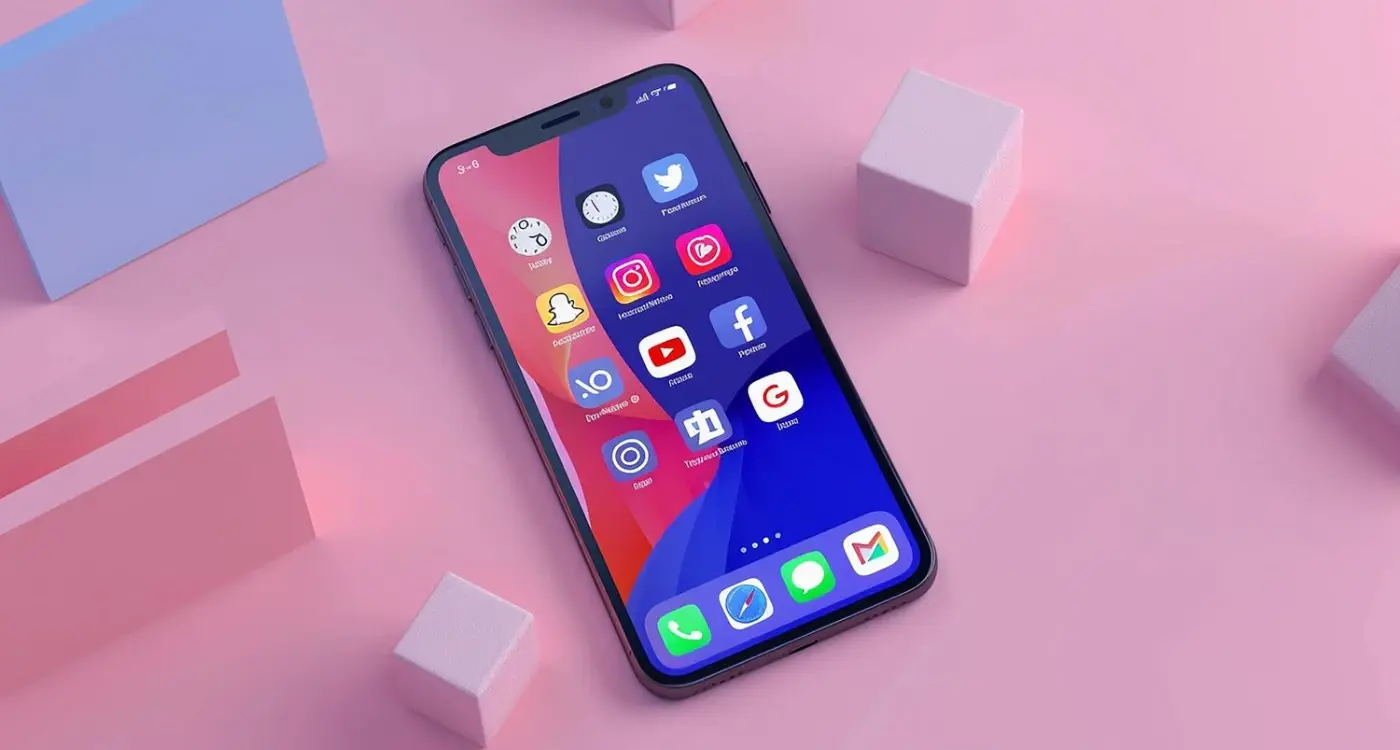What Programming Languages Are Best for an App?
Deciding which programming language to use for your app can feel like standing in front of a vast buffet where everything looks equally tempting. As app developers with over eight years of experience, we understand this challenge all too well. It's a bit like choosing which language to learn for your next holiday abroad - you want something that's both practical and fits your specific needs.
The choice of programming language isn't just about what's popular - it's about finding the right tool that brings your unique app vision to life whilst ensuring long-term sustainability
In today's mobile-first world, creating an app involves more than just picking a random programming language and hoping for the best. Whether you're dreaming of building the next viral social media platform or a simple utility app to make people's lives easier, the foundation of your success largely depends on this crucial first decision.
Why Language Choice Matters
Think of programming languages as different types of paintbrushes - each one serves a specific purpose and creates different effects. Native languages like Swift for iOS and Kotlin for Android offer the best performance and access to platform-specific features, much like using a specialised tool for a precise job. Meanwhile, cross-platform options can help you reach more users with a single codebase, similar to speaking a language that's understood in multiple countries.
Throughout this guide, we'll explore these various options, helping you understand the strengths and practical applications of each programming language. We'll focus particularly on modern approaches like Swift, SwiftUI, Kotlin, and Jetpack Compose, which are reshaping the landscape of native app development. Let's begin this journey together, shall we?
Understanding Mobile App Development Basics
Before diving into specific programming languages, let's get our heads around what mobile app development actually involves. Think of it like building a house - you need to understand the foundation before choosing your building materials!
The Two Main Mobile Ecosystems
Just as we have PC and Mac in the computer world, mobile apps primarily run on two major platforms: iOS (Apple) and Android. Each platform has its own set of rules, design guidelines, and preferred programming languages - rather like having different building regulations in different neighbourhoods.
Native vs Cross-Platform Development
Here's where things get interesting. Native development means creating apps specifically for one platform using its preferred languages - Swift or SwiftUI for iOS, and Kotlin or Jetpack Compose for Android. It's like writing a letter in someone's native language rather than using a translator.
Remember when Instagram first launched? It was iOS-only because they focused on creating a perfect experience for one platform before expanding. That's the power of native development - it allows for the best possible performance and user experience, though it requires more specific expertise.
Over our eight years of creating apps, we've seen that understanding these basics helps enormously when choosing which programming language to use. The key is to remember that there's no one-size-fits-all solution. Your choice should depend on your specific needs, just as you wouldn't use a hammer to paint a wall!
As we explore different programming languages in the following chapters, keep these fundamentals in mind. They'll help you make sense of why certain languages are better suited for particular types of apps.
Native Programming Languages for iOS
When it comes to building iOS apps, we understand that choosing the right programming language can feel a bit like selecting the perfect cup of tea - you want something that's both comforting and gets the job done brilliantly. Let's explore the primary languages that make iOS development possible.
Swift: Apple's Modern Marvel
Introduced in 2014, Swift has become the go-to language for iOS development, much like how the iPhone revolutionised mobile phones. It's Apple's preferred language, designed to be safer, faster, and more intuitive than its predecessor, Objective-C. Think of Swift as the Mary Poppins of programming languages - practically perfect in every way!
The SwiftUI Framework
Since 2019, SwiftUI has been changing the game for iOS interface design. It's like having a magical paintbrush that lets you create beautiful, responsive interfaces with surprisingly little code. While Objective-C is still around (rather like that old Nokia phone in your drawer), most new iOS apps are built with Swift and SwiftUI.
When starting with iOS development, focus on learning Swift first, then move on to SwiftUI. This progression will give you a solid foundation and make the learning curve much more manageable.
- Swift: Modern, safe, and fast performance
- SwiftUI: Declarative UI framework
- Objective-C: Legacy language, still used in older projects
- Combine: Reactive programming framework
- UIKit: Traditional UI framework, still widely used
Remember, while these tools might seem overwhelming at first, they're designed to work together seamlessly, much like the entire Apple ecosystem. The key is to start with the basics and gradually build your expertise.
Native Programming Languages for Android
When it comes to Android development, you might feel a bit overwhelmed by the options available. Don't worry - we've been there too, and we'll help you understand the landscape of Android programming languages in simple terms.
Think of Android development like building with LEGO bricks - you need the right pieces to create something amazing. The two primary languages that serve as your main building blocks for Android development are Java and Kotlin.
The Evolution from Java to Kotlin
While Java has been the traditional choice since Android's inception (much like how fish and chips has been a British staple), Kotlin has emerged as the new favourite. In fact, Google officially made Kotlin their preferred language for Android development in 2019, and we've seen its popularity skyrocket since then.
Kotlin offers several advantages that make developers' lives easier (and happier!). It's more concise, safer, and fully interoperable with Java - meaning you can use both languages in the same project, similar to how you might mix both metric and imperial measurements in everyday life.
- Kotlin: Modern, concise, and officially supported by Google
- Java: Traditional, widely used, with extensive community support
- Jetpack Compose: Kotlin-based modern UI toolkit for Android
- Android NDK: For performance-critical parts using C/C++
- XML: For traditional layout design (though Jetpack Compose is replacing this)
For those just starting their Android development journey, we recommend beginning with Kotlin. It's more intuitive, requires less code to achieve the same results, and aligns perfectly with modern Android development practices. Plus, with tools like Jetpack Compose, you'll be building beautiful, native Android apps before you know it!
Cross-Platform Development Languages
When we chat with aspiring app developers, one of the most common questions we hear is about cross-platform development. It's like wanting to bake a cake that tastes delicious whether you're in London or Tokyo - who wouldn't want that efficiency?
Cross-platform development isn't about compromise - it's about finding the sweet spot between development efficiency and user experience.
Popular Cross-Platform Solutions
React Native and Flutter have emerged as the front-runners in cross-platform development. React Native, developed by Facebook, lets you write code in JavaScript that feels truly native on both iOS and Android. It's a bit like speaking two languages but only having to learn one - brilliant, right?
Flutter, Google's offering, uses Dart programming language and has gained massive popularity for its beautiful widgets and smooth performance. Think of it as having a universal remote that works perfectly with different televisions - one tool, multiple platforms.
Understanding the Trade-offs
While cross-platform development can save time and resources, it's worth noting that you might sacrifice some platform-specific features and optimisations. For apps requiring complex features or high performance, native development with Swift or Kotlin might still be the better choice.
Xamarin and Unity are other notable options, with Xamarin being particularly popular for business applications and Unity dominating the mobile gaming space. The key is understanding that there's no one-size-fits-all solution - it's about choosing the right tool for your specific needs, much like selecting the proper ingredients for your favourite recipe.
Choosing the Right Language for Your Project
Selecting the perfect programming language for your app can feel like choosing what to watch on Netflix - overwhelming with too many options! After working with countless app projects over the years, we understand this challenge intimately. Let's break down this decision-making process into something more digestible.
Key Factors to Consider
Think of your app project like building a house. Just as you wouldn't use the same materials for a beach house and a mountain cabin, different apps require different programming languages. The choice largely depends on your specific needs and circumstances.
- iOS-only app: Swift is your best mate, especially with SwiftUI for modern interfaces
- Android-only app: Kotlin paired with Jetpack Compose is the way forward
- Both platforms with native performance: You'll need both Swift and Kotlin
- Quick market entry with decent performance: Consider React Native or Flutter
- Complex animations and graphics: Native languages offer the best performance
Remember the old saying "right tool for the right job"? It's spot-on here. If you're crafting a high-performance game or AR application, native languages like Swift or Kotlin should be your go-to choice. They offer the best performance and access to platform-specific features - rather like having a master key to all the rooms in your house.
On the flip side, if you're building a content-driven app like a news reader or simple e-commerce platform, cross-platform solutions might serve you well. However, we've found that native development using Swift/SwiftUI for iOS and Kotlin/Jetpack Compose for Android typically provides the best long-term benefits in terms of performance, user experience, and maintainability.
Modern UI Framework Languages
Remember when building websites meant wrestling with complex HTML and CSS? Well, modern UI framework languages have made creating beautiful app interfaces just as straightforward as dragging and dropping elements in a design tool. Let's explore the latest frameworks that are revolutionising how we build mobile apps.
Apple's SwiftUI: The New Kid on the Block
SwiftUI, introduced by Apple in 2019, has changed the game for iOS development. It's like having a magical paintbrush that turns your code into stunning user interfaces. Using declarative syntax (fancy words for "describing what you want rather than how to do it"), SwiftUI makes it remarkably simple to create complex layouts that would have taken hours in traditional UIKit.
Jetpack Compose: Android's Answer
Not to be outdone, Google brought us Jetpack Compose for Android. It's brilliant for creating modern, reactive interfaces with much less code than traditional XML layouts. If you've ever struggled with Android's View system, you'll find Compose refreshingly straightforward.
- SwiftUI: Perfect for iOS-first development
- Jetpack Compose: Ideal for Android-focused projects
- React Native: Great for cross-platform UI development
- Flutter: Excellent for consistent designs across platforms
When starting with modern UI frameworks, begin with small components and gradually build up to more complex interfaces. It's like learning to play piano - start with simple scales before attempting a concerto!
These frameworks aren't just about making development easier; they're about creating better, more responsive apps that users love. Whether you're building for iOS or Android, modern UI frameworks help ensure your app feels natural and performs brilliantly on its target platform.
Performance Considerations and Trade-offs
When it comes to app performance, we've learned through our years of development that there's rarely a one-size-fits-all solution. It's rather like choosing between a sports car and a family SUV - each has its distinct advantages depending on your needs.
Native Language Performance
Native languages like Swift and Kotlin typically offer the best performance for iOS and Android respectively. Think of them as perfectly tailored suits - they're designed specifically for their platforms. Swift, for instance, can access iOS features directly, resulting in faster load times and smoother animations. Similarly, Kotlin's direct integration with Android's ecosystem means better memory management and quicker response times.
Understanding the Trade-offs
However, better performance often comes with its own set of challenges. Native development usually requires more time and resources - it's like maintaining two separate gardens instead of one. For instance, while SwiftUI and Jetpack Compose offer brilliant UI capabilities, they're platform-specific, meaning you'll need separate codebases for iOS and Android.
We've found that apps requiring heavy graphics processing (like gaming apps) or complex calculations (like financial apps) benefit significantly from native development. The direct access to platform-specific features can make a noticeable difference in user experience. However, for simpler applications like basic business apps or content-driven platforms, the performance differences might be less noticeable to end users.
Remember, the best-performing language isn't always the right choice for your project. It's about finding the sweet spot between performance requirements, development resources, and project timeline - rather like choosing the right tool for the job at hand.
Learning Resources and Getting Started
Starting your journey into app development can feel like standing at the foot of a mountain, looking up at what seems like an impossible climb. We've all been there, and that's perfectly normal! The good news is that there are countless resources available to help you take those first steps.
Getting Started with Native Development
For iOS development, Apple's own Swift Playgrounds is a brilliant starting point. It's like having training wheels whilst learning to code - you can experiment with Swift in a safe, interactive environment. The official Apple Developer documentation, whilst comprehensive, can be a bit overwhelming at first. We recommend beginning with Ray Wenderlich's tutorials or the iOS Academy on YouTube for more digestible content.
Android Learning Pathways
For Android enthusiasts, Google's Android Basics in Kotlin course is an absolute gem. It's like having a friendly teacher guide you through the basics, with plenty of practical exercises along the way. The Android Developers website offers free codelabs that walk you through building real apps, which is brilliant for hands-on learners.
The best way to learn programming is to write programs. The best way to get better at programming is to write more programs.
Remember those frustrating moments when we were learning to code? We've found that joining communities like Stack Overflow, Reddit's r/iOSProgramming or r/androiddev can be incredibly helpful. These forums aren't just about getting answers; they're about connecting with other developers who've walked the same path. Don't be shy about asking questions - every expert developer today started as a beginner yesterday!
Future Trends in App Development Languages
The world of mobile app development is evolving at a fascinating pace, rather like how mobile phones themselves have transformed from basic call-making devices to powerful pocket computers. As we peek into the future, we're seeing some brilliant shifts in how we'll be crafting apps.
The Rise of Declarative UI
Remember when building user interfaces meant writing endless lines of code? Those days are quickly becoming history. SwiftUI for iOS and Jetpack Compose for Android are leading a revolution in how we create beautiful, responsive interfaces. These modern frameworks let developers describe what they want their app to look like, rather than laboriously coding every detail. It's rather like telling a story instead of writing an instruction manual!
AI-Enhanced Development
We're witnessing an exciting merge between traditional programming languages and artificial intelligence. Both Swift and Kotlin are evolving to better support machine learning capabilities right out of the box. Imagine your app being able to learn and adapt to user behaviour, all while maintaining the performance benefits of native development.
Looking ahead, we expect to see even more emphasis on type-safe programming and built-in security features in both Swift and Kotlin. The future is also bright for cross-platform capabilities, with native languages becoming more interoperable whilst maintaining their unique strengths. It's worth noting that while new tools and frameworks will continue to emerge, the fundamental importance of understanding core native development principles will remain crucial.
As your trusted development partner, we're constantly exploring these emerging trends whilst ensuring we maintain our focus on creating robust, efficient apps that truly serve their purpose.
Conclusion
Choosing the right programming language for your app is much like selecting the perfect ingredients for a recipe - it can make the difference between a delightful success and a disappointing outcome. Throughout this guide, we've explored the diverse landscape of mobile app development languages, from Swift and SwiftUI for iOS to Kotlin and Jetpack Compose for Android.
We understand that diving into app development can feel overwhelming at first - there are so many choices to consider! But remember, there's no absolutely "perfect" programming language; rather, there's the right language for your specific needs, skills, and project requirements.
For those starting their app development journey, we recommend focusing on native development with Swift for iOS or Kotlin for Android if you're targeting a single platform. These languages offer the best performance, fullest access to platform features, and most polished user experience. They're also wonderfully supported by Apple and Google respectively, meaning you'll have access to excellent documentation and community resources.
The mobile development landscape continues to evolve at a remarkable pace, rather like the British weather - always changing! But the fundamental principles we've discussed remain constant: consider your target audience, evaluate your technical requirements, and choose tools that align with your long-term goals.
Whether you're building the next big social media app or a simple utility tool, remember that the journey of app development is a marathon, not a sprint. Take your time to learn, experiment, and grow. The programming language you choose is just the beginning of an exciting adventure in bringing your app idea to life.
Share this
Subscribe To Our Learning Centre
You May Also Like
These Related Guides

How Do I Choose the Right Mobile Application Architecture for My Project?

What Are App Clips and Do You Need Them?



